Get Upland Fit for This Wingshooting Season
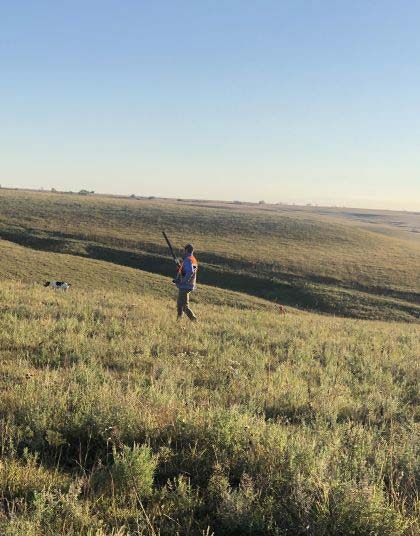
Bird-hunting season is just around the corner. Are you in shape? Upland wingshooting, especially on public lands, can be a workout. Bird hunters traipse through fields, marshes, woods and sloughs.
Bird-hunting season is just around the corner. Are you in shape?
Upland wingshooting, especially on public lands, can be a workout. Bird hunters traipse through fields, marshes, woods and sloughs. They also walk up and down hills, climb mountains, cross breaks, and large expanses of land for hours with no guarantee of seeing or shooting a bird. Some people, non-hunters in particular, argue that hunting is not an active sport. This statement is completely incorrect. Hunters are ATHLETES. By definition, an athlete is a person who trains and skilled in exercises or activities requiring physical strength, agility and stamina.
An upland bird hunter will come face to face with an array of obstacles, both mental and physical, that can be arduous to overcome. The physical adversities that wingshooters encounter while pursuing their quarry will differ from one region to the next. Each bird brings its own set of physical hurdles.
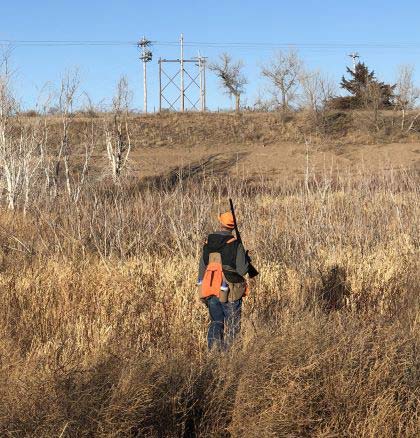
Whether climbing steep mountains for snow cock and rocky hillsides for those red-legged devils or exploring coniferous forests of the back country for spruce grouse, or even walking vast fields and grasslands for prairie birds, no matter the terrain, it all requires some form of physical preparation for the trek. Regardless the type of hunting one must still have to get in and get out. The better shape a hunter is in, the easier and safer the hunt will be.
Being in healthy physical form can increase the odds of success. Physical endurance, mental toughness and fundamental shooting will make a hunter better. Being in shape carries with it significant health benefits. Let’s be frank: if you’re huffing and puffing to move an unfit body through the landscape while carrying a weapon and wearing some type of upland bird vest or technical pack, you’re not going to have a good time.
Get the body ready. If it’s been a while since you’ve strenuously hunted or exercised, and you have a few miles on the body, it’s a good idea to have a medical check-up first. No matter the type of hunting, upland wingshooting is a very physical sport. It requires strength to carry gear and a vest full of birds. Developing stamina is necessary to hike in to give chase. Cardio will strengthen one’s heart and improve lung capacity, important for those adventurous wingshooters hunting in extreme environments for birds that are off the regular upland grid.
In upland hunting, your legs are as important as your shotgun. Jump start the season by getting the legs in shape by bicycling, hiking, running or walking. The legs will carry hunters into those realms where each bird lives.
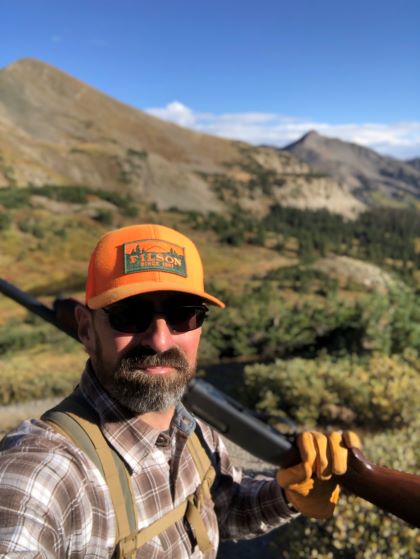
Why train? Offseason training has a significant impact on hunting success. For example, all-day grouse and chukar hunting require a level of strength and endurance many wingshooters take for granted until it’s too late. Participating in a training program before the next hunting trip is not only a good idea, but it can also help hunters get the most from their outdoor experience.
Training is important when hunting a bird in an area or terrain not accustomed to. Personally, prior to leaving for a Wyoming sage grouse hunt, I trained throughout the summer. I knew through research that I would be hunting at a much higher elevation (6,000-plus feet) than where I live. Compared to the 1,000 feet above sea level I was accustomed to in Kansas, I wanted to be acclimated to the higher altitude of walking and hunting. I did not want to be affected by shortness of breath and fatigue for such an epic bird. I looked for hills and trails in my area where I could hike and somewhat mimic the formidable high-desert terrain of Wyoming.
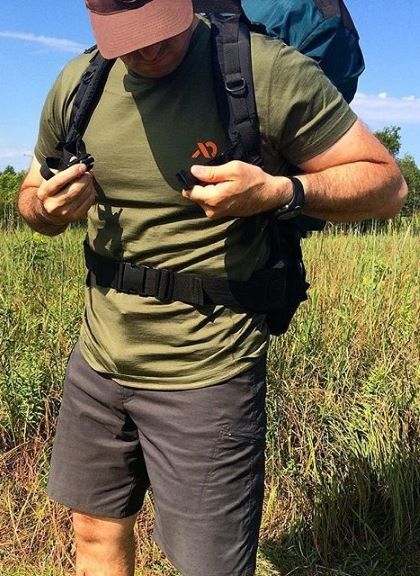
Besides hitting the gym and walking on treadmills, try uutilizing trails with uneven terrain, climb hills and slopes, and stream crossings to train. At various intervals, drop and do a set of push-ups, jumping jacks, and bend-and-thrusts to add to your workout. I carry a small backpack with approximately 40 pounds of weights on my hikes and runs. It helps in getting accustomed to carrying weight and helps strengthen shoulders, back, abs, and legs.
Upland hunting involves a lot of walking while carrying some extra weight. Carrying a six-pound shotgun, and loaded down with shot shells, plus the heft from the birds shot, can become overbearing for those that are not in shape. Bird hunters need a workout which will focus on building stamina in one’s legs and strength and flexibility in your core.
Listed are six fairly easy exercises that bird hunters can do to get in better shape that will make the physical challenges of upland hunting easy. All can be done at home, with minimal equipment. Get creative.
- Warm-up: Stair Master, treadmill, stadium bleachers – walking on incline for 45 minutes at a moderate pace.
- Walking Lunges: help improve endurance during long day hikes / hunts.
- Squats: two-parts of the body a hunter uses the most are the legs and back).
- Push-Ups: builds upper body strength and can also strengthen lower back and core muscles.
- High-Knees: gets legs and lungs ready for hunting though high prairie grasses, thick brush, thick cattails, and deep snow.
- Calf-Raises: ankle strength and stability to help walking uneven and rough terrain.
Here’s a personal example of the benefits of being “upland” fit…

While hunting prairie chickens in the Flint Hills I observed a friend’s reaction to being out-of-shape. He succumbed to shortness of breath, fatigue, muscle cramps and lack of energy from someone who desperately wanted to get into bird hunting. Yes, there may have been other contributing factors such as diet, sleep, lack of water, etc…but the reality is that these were brought on at the start of the hunt. Opportunities were missed to get on prairie chickens because he couldn’t run up to the dog on point. Warnings had been given advising of walking up and down and across breaks and hills and that it could be a bit physically demanding. “Oh, I’ll be okay walking” is the answer I got. Play it safe and get in shape. Injuries are the last thing you want ruining the hunt.
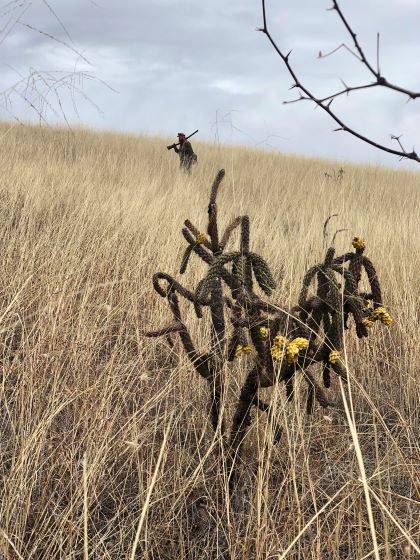
So, my advice is taking the extra time during the summer or non-hunting months and prepare yourself physically. This will give you an idea if your body can tolerate upcoming hunts, and if not, then have the time to create a plan and start getting in better physical condition. Because once opening day arrives and bird hunters find themselves pushing through bramble, crawling over downed trees, repeatedly crossing fences, and slogging through dense, wooded creek bottoms and big open grasslands, they will understand that the physicality is part of the hunt. Bird hunter’s needs to maintain an adequate fitness level to be able to handle the demands of the field.
Edgar Castillo is a recently retired law enforcement officer for a large Kansas City metropolitan agency. He also served in the United States Marine Corps for twelve years. Edgar was born in Guatemala, and when his family came to the U.S., his father, a new bird hunter himself, would take Edgar afield in search of roosters and bobs. Edgar’s passion lies in the uplands as he self-documents his travels across public lands throughout Kansas and the U.S., hunting open fields and prairies, walking treelines and bustin’ through plum thickets, in a never-ending chase to hunt wild birds in wild places.

Edgar Castillo is a twenty-five-plus year veteran law-enforcement officer for a large Kansas City metropolitan agency. Edgar also served in the United States Marine Corps for twelve years. Besides his faith and family, his passion lies in the uplands as he self-documents his travels across public lands throughout Kansas hunting open fields, walking tree lines and bustiń through plum thickets in search of wild birds.


Comments